6 Key Elements to Optimise Your Product Feed for Google Shopping Filters
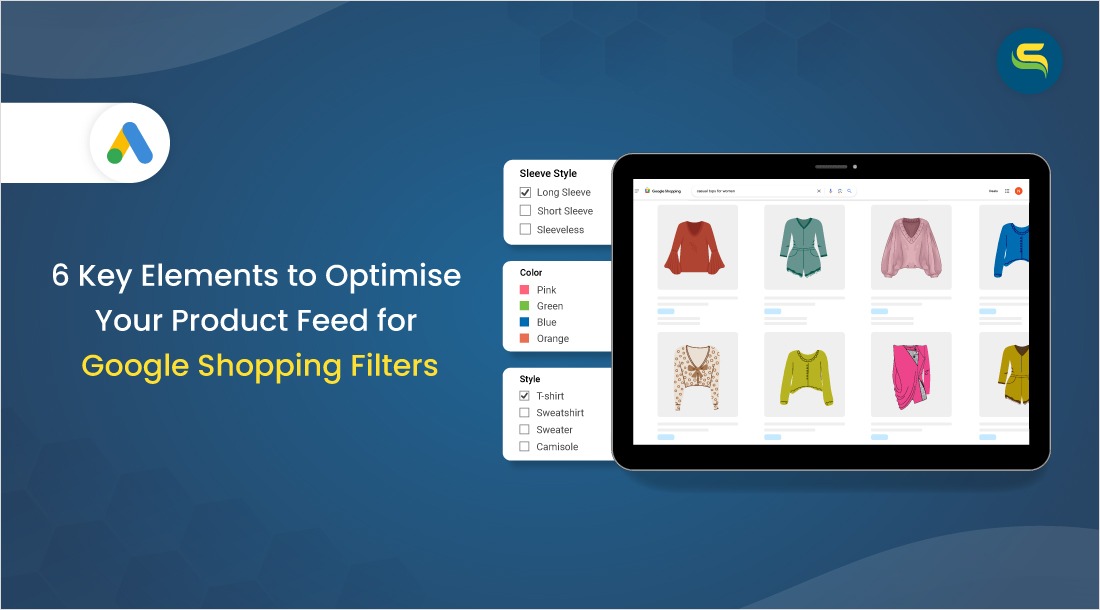
The filters in Google Shopping have become an integral aspect of users’ shopping journeys. These filters help shoppers quickly navigate the results and find the product that fits their requirements.
Being a merchant it is in your hands to optimize your product feed so that you appear upfront in the shopping tab for relevant filters.
In this blog, we will decode questions like, how few attributes from the product data feed are drawn by Google directly as filters. And from where does Google get data for certain filters not drawn from the product attributes?
6 Elements for Google Shopping Filters
According to our observations, the filters Google provides in the shopping tab are generally derived from six major data sources the merchant submits to the Google Merchant Center.
1. Product Attributes
Below is the list of product data feed attributes that directly appear in the filters of shopping Ads results.
As you are aware, certain attributes are compulsory for ‘product data feed’ submission in your Google Merchant Center. However, many other attributes are optional yet essential.
Let’s take an example of apparel products
Required Attributes
- Brand
- Color
- Size
- Price
- Condition
- Availability
Optional Attributes
- Product Type
- Material
- Pattern
- Size Type
- Gender
This simply means that Google will not flag your product if you do not submit the optional attributes. But they are of grave importance to product visibility.
Let’s take an example:
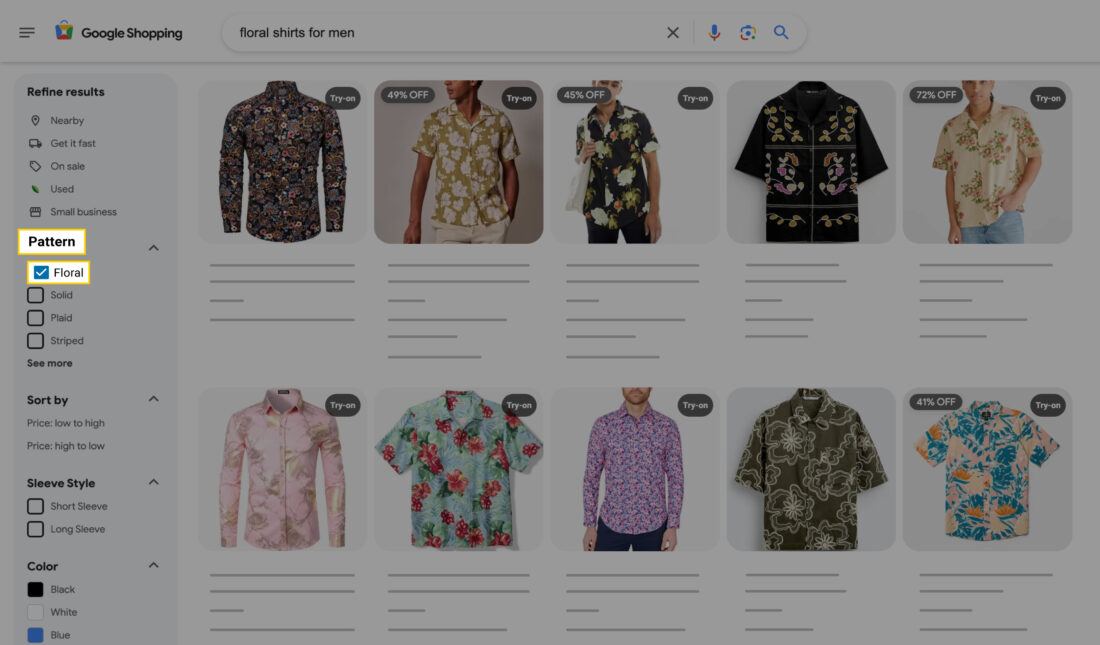
As a shopper, I am looking for a floral shirt for the upcoming holidays. Now, pattern is an optional attribute but if you haven’t submitted it, it may happen that you won’t be able to appear on top when someone chooses floral as the pattern.
The above case applies to all industries be it furniture, electronics, camera & optics, pharmaceuticals, etc. It’s generally recommended to include not just the required attributes in your feed submission, but also all possible product attributes to maximize ad visibility.
2. Product Title
Have you ever considered using a separate title for your website and a different one for Google Shopping Ads?
Yes! Two separate titles. If you haven’t done that you should surely try. You can create a product title different from your website’s title, in a Google-recommended format. You may use this trick to highlight a more influential feature of your product in the title (On Google), which might differ from the product title of your website.
So, Google will consider the various attributes from within the product title when showing the products for relevant filters.
Here is a pro tip on how to customize the product title, description, or type for all your products at once using the export-import CSV feature from our SimprosysGoogle Shopping Feed App.
Let’s look at how apparel brands structure their product titles for Google Shopping Ads results.
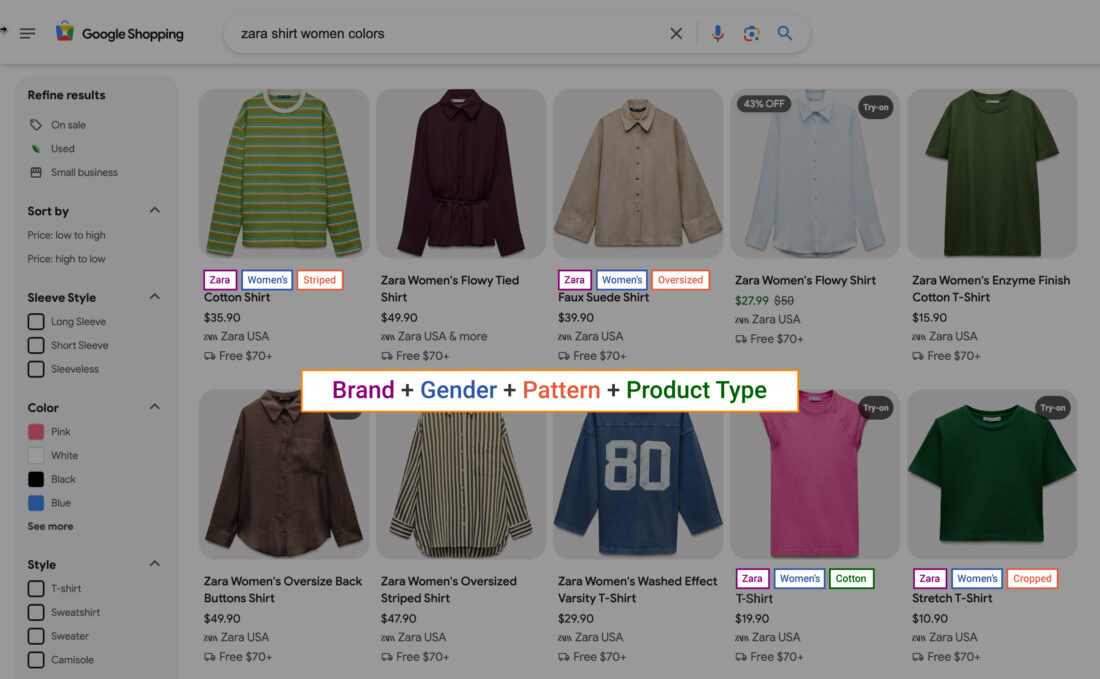
For non-branded products, you can try replacing brand attributes with the product’s USP.
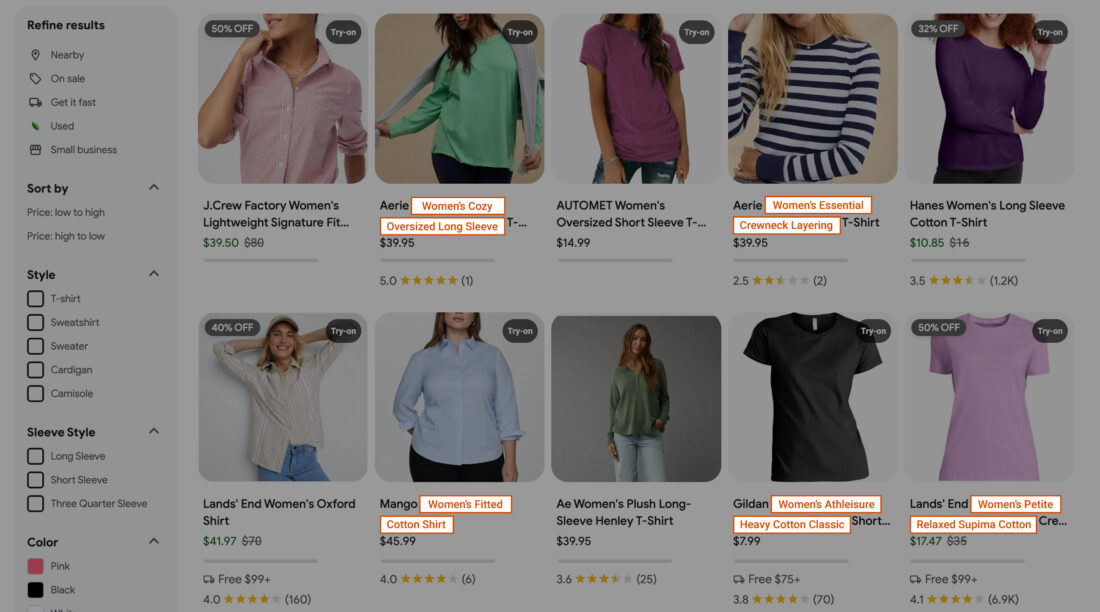
For more information on writing a “product title” refer to this article.
3. Product Description
A detailed description can help Google show your product to the right customers. Product Description is a required attribute with a character limit of 5000. We recommend submitting all the various aspects that a product covers in the description.

Thus, if you want your product to appear for relevant filters, it is advised to include all of the product details in the description such as product appearance, USP, and usability in addition to the standard attributes.
For more information on writing a product description refer to this article.
4. Product Image
The image of your product is another essential factor that is considered by Google when deciding upon the product filters on the left. It is recommended to submit high-quality images to Google, as it is said that Google reads every pixel of the product images.
Take a look at the image below, for example:
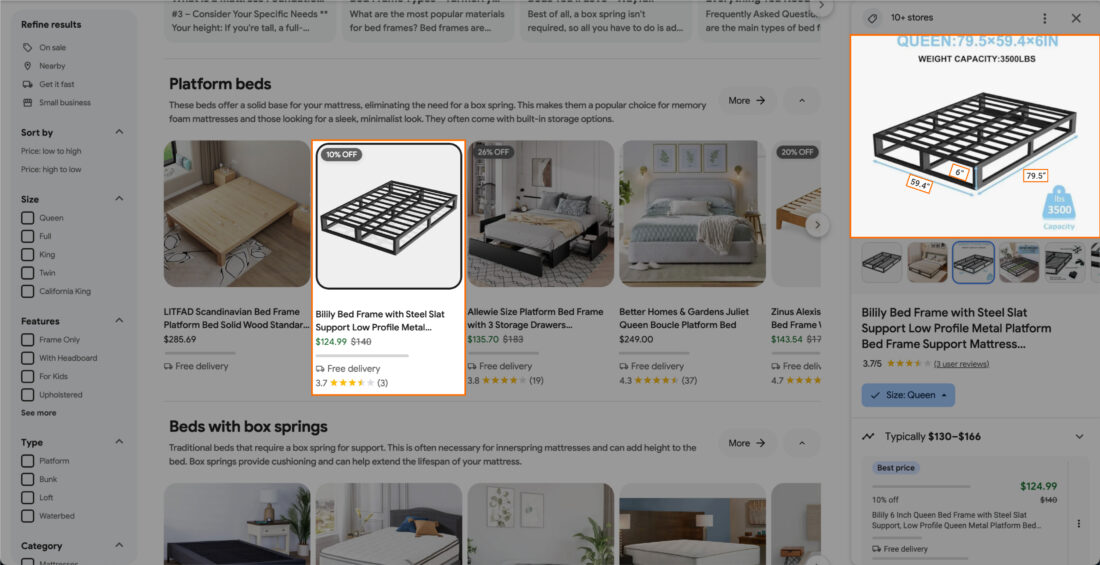
Google may read the measurements mentioned in the image of the product and can pick this product for a relevant filter.
Note: Google has specified that your image must be at least 250 x 250 pixels in size if you are selling apparel products and for Non-apparel product images it should be at least 100 x 100 pixels.
As a result, providing Google with legible, high-quality images can help your product appear for relevant filters.
5. GTIN
A Global Trade Item Number (GTIN) is a unique and internationally recognized identifier for a product. They are found on branded products; if you are a seller who sells branded products, it is highly suggested that you submit GTIN values.
GTINs help better categorize products in shopping ads. When two merchants submit the same GTIN value, Google knows that those two products are the same.
Hence, Google sometimes groups your product with other sellers and displays the information you have submitted along with relevant information submitted by other sellers. This grouped list of sellers enables shoppers to choose the best option among various sellers of the same product.
It’s worth noting that in case you are selling unbranded products, make sure to submit the MPN for all your products.
Let’s have a look at how it looks on Google:
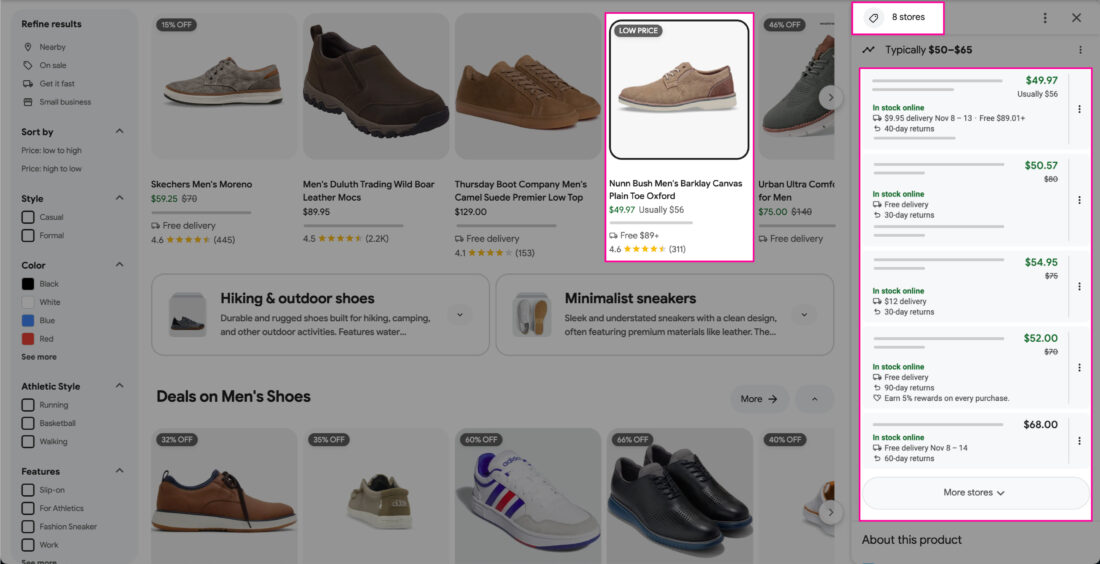
Information submitted by any of these 10 sellers to Google Merchant Center can be used to showcase the data visible in the screenshot above. Thus, ensure that you provide all the details related to your product along with GTIN.
Hence, even if you miss out on certain attributes in your product data feed, make sure you are submitting GTINs for your product wherever available.
6. User Generated Content
Google also collects information from reviews posted by your customers to decide if your product is eligible to appear in some advanced Google Shopping Filters.
Let’s look at how Google categorizes your products depending on customer reviews:
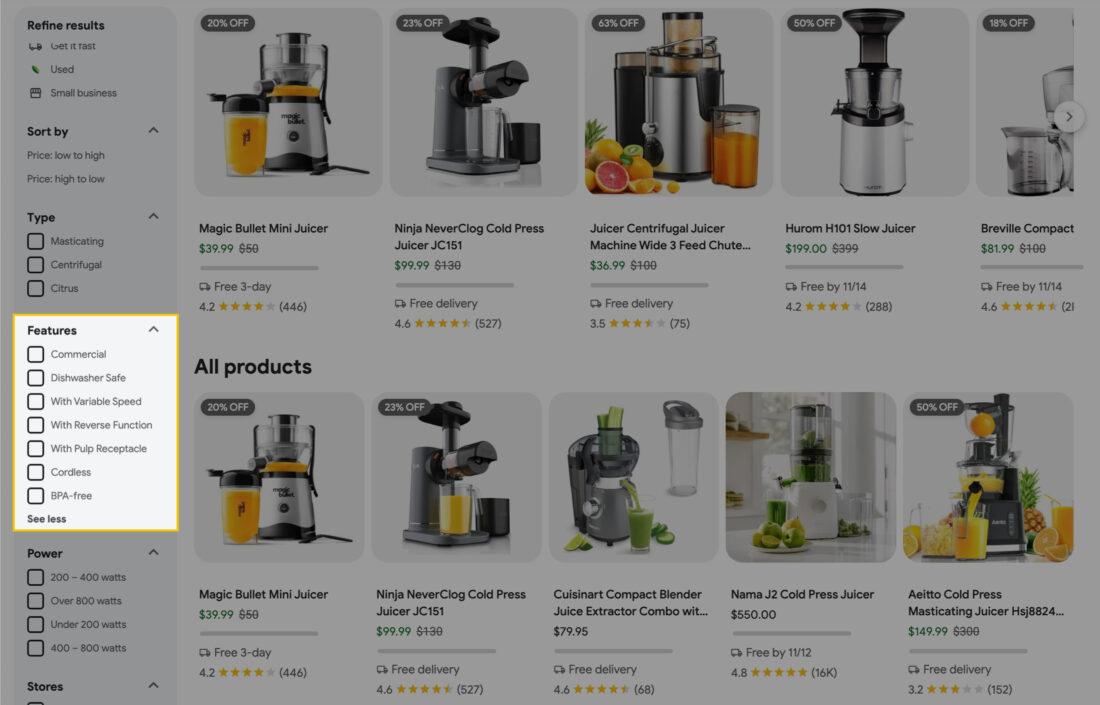
This screenshot is from the Google Shopping Tab, where Google has classified products from various sellers into different features in the filters, based on customer reviews.
A product with a high rating might rank higher in search results or specific filter categories like “Top Rated.” However, ensure that reviews are genuine, as Google has measures in place to detect fraudulent review activity.
Although all of this information is vital, the simplest method to ensure that you appear for the relevant filters is to provide Google with all the possible product information in the form of a quality data feed.
Think from a searcher’s perspective: If someone uses Google to hunt for a certain product, they likely have specific product characteristics in mind.
As a conclusion, here’s a quick checklist summarising all the above-mentioned points:
- Submit required attributes (Brand, Color, Size, Price, Condition)
- Include optional attributes (Material, Pattern, etc.)
- Optimize product titles/descriptions with important keywords
- Use high-quality, legible images
- Include GTINs (or MPNs for unbranded products)
- Encourage customer reviews and ratings
All you need to do is make sure you show up when the shopper applies the filter for those particular traits. The only way to do so is to submit a rich product data feed to the Google Merchant Center.


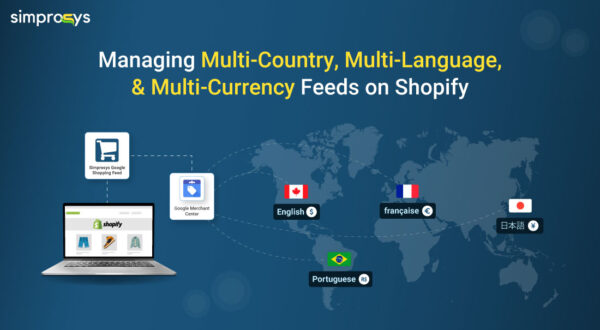
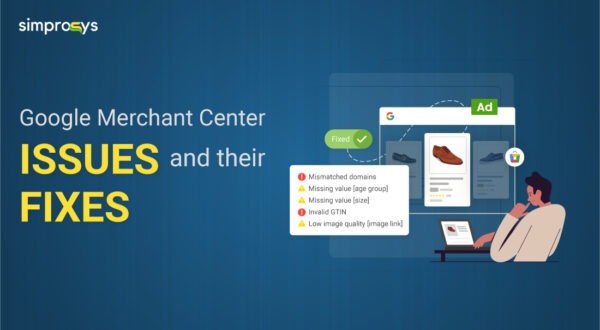

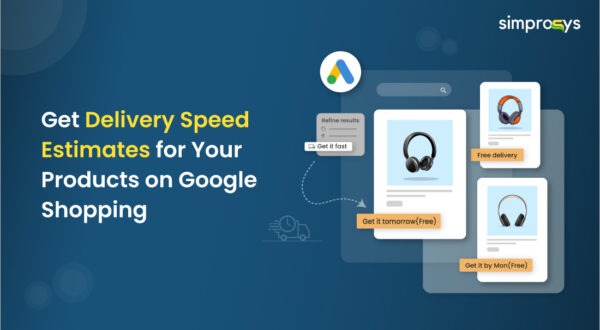
Leave a Reply